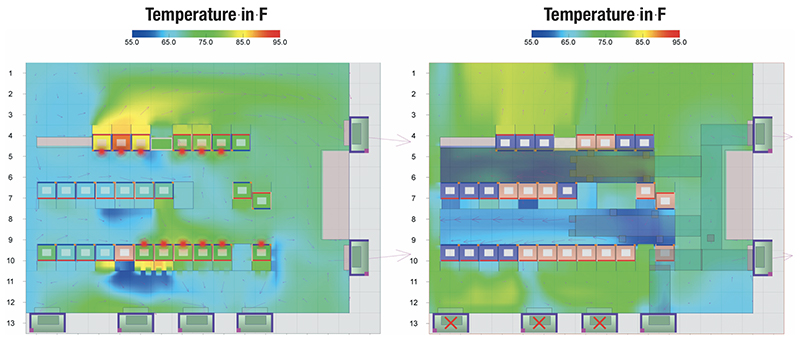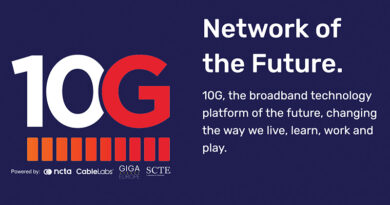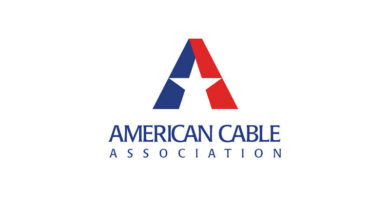Smart Energy
By Daniel Howard
A Renaissance of Energy Modeling
I’ve been writing a lot lately about how the Energy 2020 program and the associated SCTE Energy Management Subcommittee (EMS) of the SCTE standards program are game changers, helping the cable industry monitor, manage and reduce energy consumption across the entire cable footprint, from corporate offices to the outside plant. But there is a more subtle gift the SCTE has given the industry, and it literally touches every edge facility of the network: mathematical and economical modeling to guide our energy conservation measures and rollout at scale.
Go into any legacy cable hub or headend, and you’re likely to see common energy and cooling challenges that arise from the fact that energy efficiency was never really considered when these facilities were constructed several decades ago. The buildings are often poorly insulated and air conditioning units are typically of the wall pack unit type, more commonly seen in portable school classrooms, for example. Ozone-depleting refrigerants such as R22 are found, and although they are being phased out, a lot of them are still permitted and remain, even though modern refrigerants are more efficient and can actually extend the life of older heating, ventilation, and air conditioning (HVAC) units.
While the new converged cable access platform (CCAP) and other modern cable headend and hub equipment are more energy efficient and have a smaller footprint, individually these boxes generate a lot more heat. Without the aisle containment found in modern data centers and new facilities, the hot and cold air mix in cable edge facilities and this causes some parts of the facility to be much hotter than others. Thus, proper placement of new, higher capacity cable equipment in edge facilities is required so that the higher heat sources are kept cool enough. We used to think in terms of minimizing cabling in the facility, but it is time now to think about where best to put equipment from a cooling and energy efficiency perspective. But we need the tools to figure out where best to put the new equipment.
Thermostats are another challenge due to our legacy approaches in edge facilities. Many of us already have smarter home thermostats than those currently used in cable hubs. Further, the hub thermostats are usually mounted on facility walls, not within the rack aisles where the cooler temperatures are actually required. Unfortunately, the more intelligent modern industrial HVAC controls used in newer data centers that reduce compressor on-time for further energy efficiency improvements and advanced monitoring functionality are sometimes seen as too expensive for the many cable hubs that would need them.
So how do we find cost-effective ways to bring our hubs and headends up to modern cooling standards? Thanks to the SCTE Energy 2020 program, better asset management systems and practices of cable operators, and modern mathematical tools like computational fluid dynamics (CFD) modeling, we can now attack those legacy cable hubs with the power of science, modern software, and the force of the Energy 2020 goals. CFD modeling is commonly used in new data center design as well as in recommissioning data centers and buildings, and on a recent SCTE EMS webinar, we saw that CFD modeling is now frequently being used for new hub and headend designs.
But where we will really move the needle on energy consumption is via the application of this mathematical modeling tool to legacy hubs and headends. We can now take a legacy hub layout diagram, along with detailed HVAC measurements and telecom and server equipment lists, and turn them into a mathematical model. Then, that model can be used to perform a variety of what-if scenarios so that the most cost-effective and least disruptive optimizations involving ducting, rack and aisle containment, and thermostat relocation can be applied at scale to the entire cable edge.
Examples of hub CFD modeling are illustrated in the accompanying figures. The left image above shows the airflow before improving energy efficiency, where red dots show hot spots at the inlets of critical equipment like CCAP systems and large routers. The image on the right shows the energy savings possible via the installation of aisle containment and ducting into those contained aisles. Hotspots are eliminated, and most importantly, three of the HVAC systems are no longer needed! In a region with high electricity rates, such improvements can pay for themselves in a matter of months, while it only takes a few years to pay back such improvements in regions with lower electricity rates.

We can even disable one of the remaining HVAC systems on the right and still get sufficient cooling to all of the telecommunications equipment, so in addition to reducing OpEx costs, we have added true HVAC redundancy to the facility. Before improvement, if the wrong HVAC unit fails, some of the telecommunications equipment will generate alarms.
Many of the airflow optimization solutions being developed are novel and different from more typical solutions because of the unique nature and the large number of cable edge facilities. In the model above, we can further reduce the cost and effort of implementing the ducting by installing partial containment and ducting, or in some cases no ducting at all, and merely point the air in the right direction from the HVAC units. Using these detailed models of cable facilities, we can identify the best solutions that offer most of the available energy and OpEx savings while keeping costs down and making the solutions scalable to most facilities. Typical data center solutions cannot easily be retrofitted to the wide variety of existing hub conditions and layouts, hence custom cable solutions that are based on sound mathematical modeling allow us to work smarter, not harder, in getting the most bang for our OpEx bucks.
Thanks to the encouragement the SCTE Energy 2020 program has provided, in particular focusing on cable’s edge facilities, the industry has applied and adapted mathematical tools and solutions used for data centers to the hub and headend environment, and cable operators can now effectively attack one of their biggest challenges. Initial estimates of energy savings from the mathematical and economic models discussed in this article are impressive: when airflow optimization is combined with refrigerant replacement and advanced HVAC controls, the total energy savings on hub HVAC electricity costs range from 36-55%. This HVAC optimization toolkit also extends the life of existing HVAC units, even while making them more efficient. Modern refrigerants are more efficient and they increase the effective capacity of the HVAC systems and so they don’t have to work as hard to cool the facility.
Optimizing the HVAC systems in legacy hubs was seen initially as one of the biggest challenges facing the Energy 2020 program, but no longer. Mark Dzuban’s vision of making the cable network much more energy efficient is not only possible, but is happening now, and the industry is getting a lot smarter about how we adapt data center solutions to the unique aspects of our cable environment. I’m personally having a blast working on the front lines now in executing Mark’s energy efficiency vision with solid engineering, sound economical thinking, and yes, advanced engineering mathematics and modeling to make this happen.
 Daniel Howard
Daniel Howard
Director, Hitachi Energy and Environmental Efficiency
Daniel Howard brings more than 20 years of experience in cable innovation to his role as director, consulting services, energy solutions, for Hitachi’s Energy and Environmental Efficiency practice.
Howard was the first SCTE CTO, responsible for driving standards leadership, innovation and increased focus on energy efficiency, IP delivery over cable and the integration of wireless technologies into the last-mile access network. He co-authored DOCSIS® 1.1 and 2.0 specifications and was a lead inventor on Broadcom Corp.’s primary DOCSIS 3.0 patent.
Chart: Provided by Client



